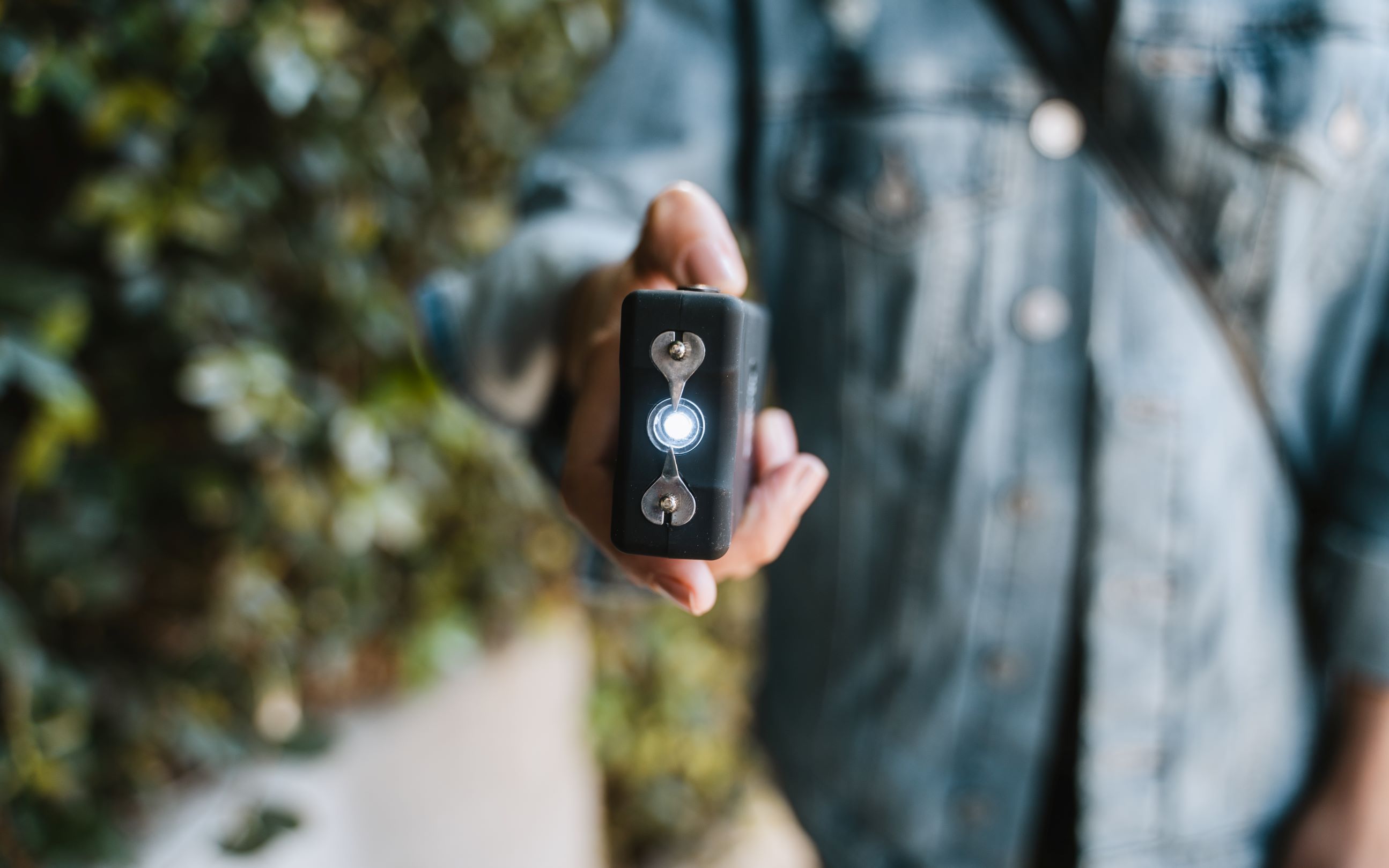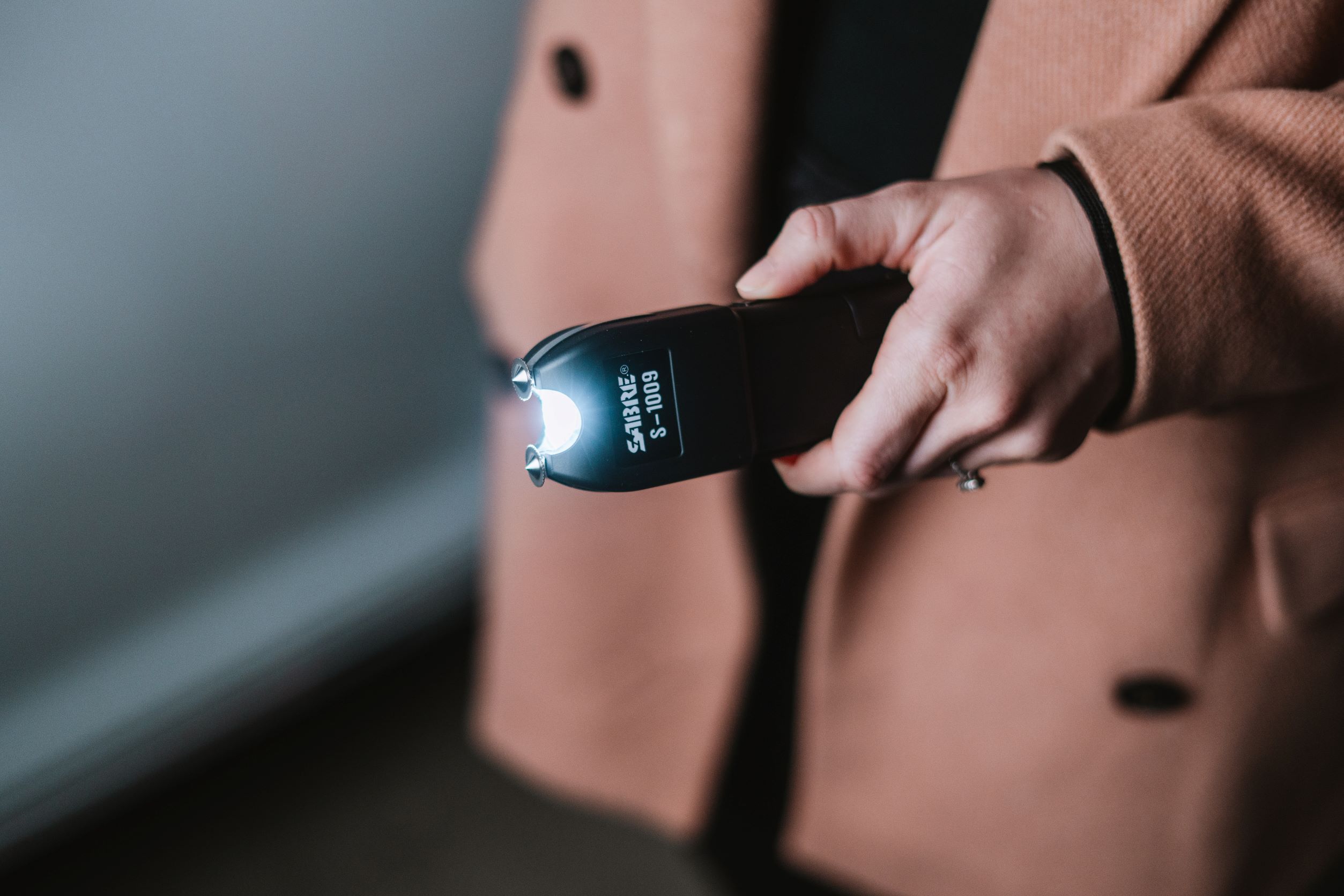Stun Gun Voltage Vs. Microcoulombs: The True Measurement of Strength in a Stun Gun
If you've ever shopped for stun guns, you know that many companies make extremely high voltage claims - up to 100 million volts. This may sound impressive, but the truth is that these numbers are misleading and physically impossible. In fact, 30,000 is the maximum voltage possible for a stun gun with contacts spaced one centimeter apart. Any higher voltage claim would violate the laws of physics.
So how can companies get away with making these false claims? There are no official design or technical standards in the stun gun industry, nor any government regulation holding them accountable. Sadly, some businesses take advantage of this lack of oversight. It's up to you to be informed about the products you use for your safety.
Keep reading to learn about: How a Stun Gun's Strength is Measured, What Makes a Stun Gun Effective, and How to Test Stun Gun Levels.
Level III stun guns: 1 µC or greater
According to the National Institute of Justice, stun guns that emit 1 µC or more produce ‘unbearable pain’ (when used on most sober, emotionally stable people).
| SABRE Stun Gun | Microcoulombs (µC) |
|---|---|
| SABRE Tactical Stun Gun with LED Flashlight (Industry's Highest Pain-Inducing Stun Gun) |
2.517 |
| SABRE 2-In-1 Stun Gun with LED Flashlight and Wrist Strap | 1.820 |
| SABRE 2-In-1 Stun Gun and Flashlight with Belt Holster | 1.600 |
| SABRE Stun Gun with Anti-Grab Bar Technology | 1.250 |
| SABRE Slim Stun Gun with LED Flashlight | 1.170 |
Level II stun guns: 0.5-1 µC
According to the National Institute of Justice, stun guns that emit 0.5 µC or more produce pain (when used on most sober, emotionally stable people).
| SABRE Stun Gun | Microcoulombs (µC) |
|---|---|
| SABRE Concealable Stun Gun with LED | 0.845 |
| SABRE Mini Stun Gun with Personal Alarm and LED Flashlight | 1.69 |
Level I stun guns: less than 0.5 µC
Level I stun guns can be counted upon to produce an intimidating sound and spark. However, they should not be your sole self-defense tool – just in case your attacker is not intimidated. SABRE does not currently manufacture any stun guns that fall into this category.
Learn more about Rassettica stun gun strength testing purpose and procedures.
There are a lot of personal safety product options out there for you. If a stun gun is for you, remember to check the strength, features, and size of a stun gun based on your needs. Shop SABRE Stun Guns below.
Shop SABRE Stun Guns
Shop All Stun Guns
Learn more about How to Measure a Stun Gun's Strength
Read More
Understanding Resistance (Voltage advertised should take resistance into account):
When testing stun guns, it's important to consider the effect of resistance on their performance. In our testing, we used 600 ohms of resistance as a standard measure. However, it's worth noting that a person's electrical resistance can vary depending on factors such as gender. Men generally have lower resistance than women, and the internal resistance of the human body can range from 300 to 1,000 ohms, according to the University of Illinois at Urbana-Champaign.
Mike W. Kroll, who sits on the board of TASER® International, Inc., also notes that human flesh “in worst conditions offers around 400 ohms of resistance.” So, if a stun gun is effective (or, emits significant charge) against 600 ohms of resistance, that’s a good indicator it would induce pain on a human.
Rassettica Testing Limited:
Here at SABRE, we worked with Rassettica, an independent conducted energy weapon testing company, to test our stun guns and their levels. Learn about Rassettica stun gun strength testing purpose and procedures below.
Stun Gun Strength Testing Purpose and Procedures
The Rassettica test procedure in this section describes the methods, equipment and personnel used to develop a relative characterization of the electrical charge characteristics of stun guns, with particular emphasis on charge (µC) delivered by the stun gun.
- During the signal acquisition, the stun gun is fired for up to 7 seconds into a resistive load (600 ohms) which approximates the resistance of a major body muscle.
- The stun gun is usually energized by two switches.
- The first switch, usually a slider switch, arms the circuitry and the second switch, usually a push button switch just above the arming switch, triggers the electrical discharge.
- The stun gun is held on the non-conductive pad so that the contacts touch the metal contacts which transmit the electricity to the resistive load.
- The measuring instrument (oscilloscope) is triggered to open a 7-second window of signal acquisition.
- The push button trigger is depressed so that approximately 5 seconds of discharge are captured by the measuring instrument.
- It will be noted that good contact with the contacts on the contact pad will not produce any or very little arcing sound. An absence of audible sound and no visible arc means that all the discharged energy is flowing to the resistive load for measurement and recording. This is the desired result. Poor contact with the contact pad or discharge in open air will produce a loud snapping sound and visible arc; this is not a desirable result.
- The measuring instrument ceases capturing signal (either automatically or manually).
- After the measuring instrument has recorded an interval of signal capture, the raw data file is saved with date/time stamp, make and model and serial number of the stun gun.
- A second and third discharge from the stun gun is taken following the above steps.
Read the entire 'A Simple Field Test Procedure for Stun Guns' document from Rassettica Testing Limited (May 2016).
Now that you learned that microcoloumbs are the true measure of strength in a stun gun (not voltage), take your stun gun knowledge to the next level.



